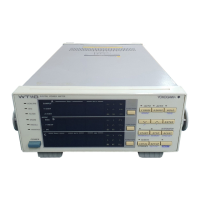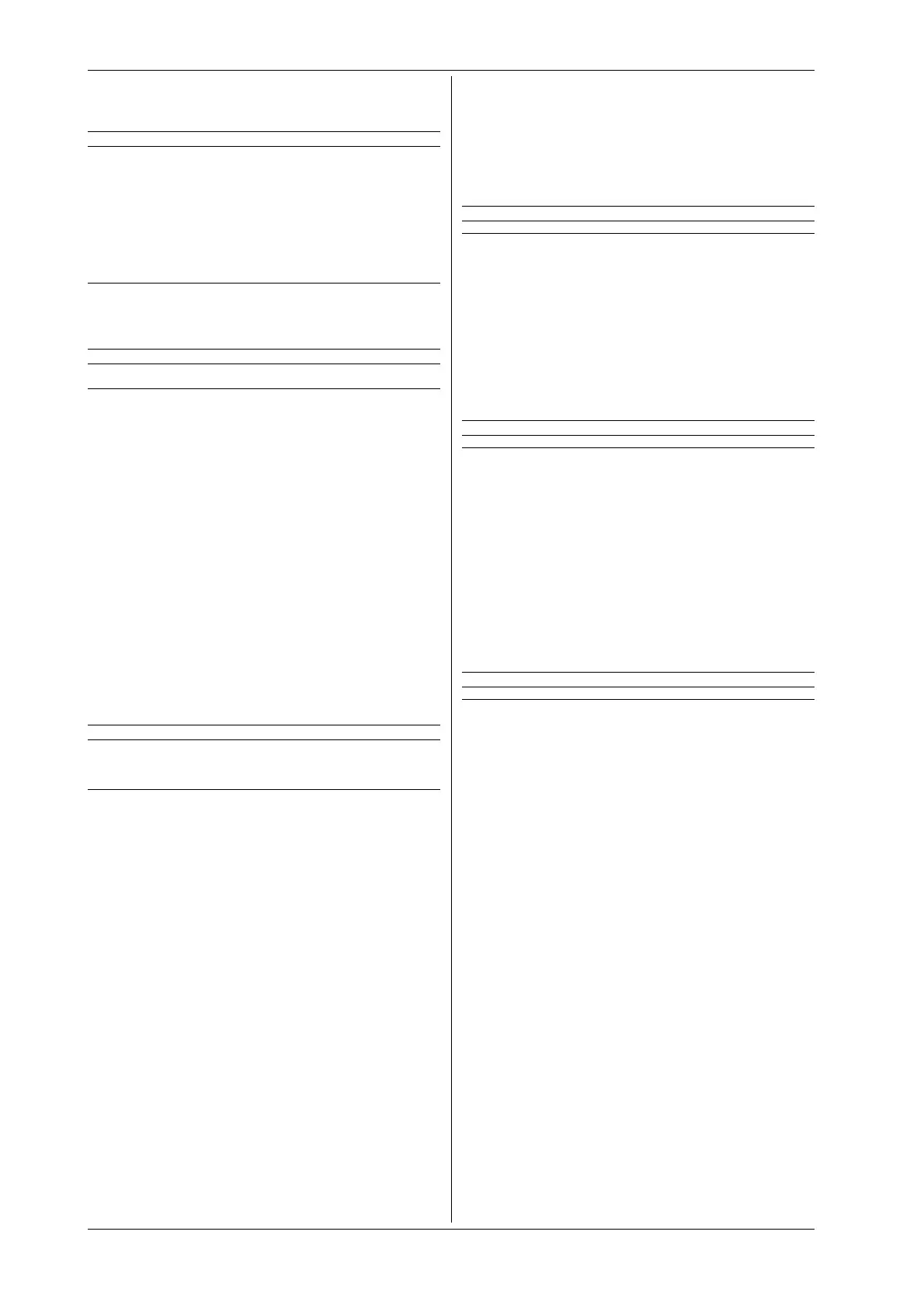IM 253401-01E
App2-6
Appendix 2.2 Program Format
<Multiplier>
Multipliers which can be used are shown below.
Symbol Word Description
EX Exa 10
18
PE Peta 10
15
T Tera 10
12
G Giga 10
9
MA Mega 10
6
K Kilo 10
3
M Mili 10
-3
U Micro 10
-6
N Nano 10
-9
P Pico 10
-12
F Femto 10
-15
<Unit>
Units which can be used are shown below.
Symbol Word Description
V Volt Voltage
A Ampere Current
<Multiplier> and <Unit> are not case sensitive.
“
U
” is used to indicate “µ”.
“
MA
” is used for Mega (M) to distinguish it from Mili.
However, when using “
MA
” for current, Mili-ampere will be
valid; therefore use “
MAA
” to assign Mega-ampere.
If both <Multiplier> and <Unit> are omitted, the default unit
will be used.
Response messages are always expressed in <NR3> form.
Neither <Multiplier> nor <Unit> is used, therefore the default
unit is used.
<Register>
<Register> indicates an integer, and can be expressed in
hexadecimal, octal or binary as well as as a decimal number.
<Register> is used when each bit of a value has a particular
meaning. <Register> is expressed in one of the following
forms.
Form Example
<NRf> 1
#H<Hexadecimal value made up of the digits 0 to 9, and A to F> #H0F
#Q<Octal value made up of the digits 0 to 7> #q777
#B<Binary value made up of the digits 0 and 1> #B001100
<Register> is not case sensitive.
Response messages are always expressed as <NR1>.
<Character Data>
<Character data> is a specified string of character data (a
mnemonic). It is mainly used to indicate options, and is
chosen from the character strings given in { }. For
interpretation rules, refer to “Header Interpretation Rules” on
page App2-5.
Form Example
{RMS|VMEan|DC} RMS
As with a header, the “
COMMunicate:VERBose
” command can
be used to return a response message in its full form.
Alternatively, the abbreviated form can be used.
The “
COMMunicate:HEADer
” command does not affect
<character data>.
<Boolean>
<Boolean> is data which indicates ON or OFF, and is
expressed in one of the following forms.
Form Example
{ON|OFF|<NRf>} ON OFF 1 0
When <Boolean> is expressed in <NRf> form, OFF is
selected if the rounded integer value is “
0
” and ON is selected
if the rounded integer is “Not 0”.
A response message is always “
1
” if the value is ON and “
0
” if
it is OFF.
<Character String Data>
<Character string data> is not a specified character string like
<Character data>. It is an arbitrary character string. A
character string must be enclosed in single quotation marks (
‘
)
or double quotation marks (
“
).
Form Example
<Character string data> ‘ABC’ “IEEE488.2-1987”
Response messages are always enclosed in double quotation
marks.
If a character string contains a double quotation mark (
“
), the
double quotation mark will be replaced by two concatenated
double quotation marks (
““
). This rule also applies to a single
quotation mark within a character string.
<Character string data> is an arbitrary character string,
therefore this instrument assumes that the remaining program
message units are part of the character string if no single (
‘
) or
double quotation mark (
“
) is encountered. As a result, no error
will be detected if a quotation mark is omitted.

